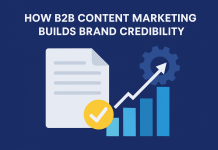Types of Data Segmentation for B2B Companies
The effectiveness of customer data segmentation procedures is strongly dependent on choosing the ideal criteria for classifying large amounts of data that share common characteristics.
While there are more methods of segmentation that go deeper into the bonding factors that connect each contact within a batch, the following are the most frequent (and realistic) ways to segment customer data:
Lead Attribution
This focuses on the most crucial lead-related characteristics, such as geography, age, gender, company size, education level, personal hobbies, and other important elements that can be used to build a detailed customer profile.
This first filter aids your team in determining the characteristics of a given customer or prospect, such as decision-making authority, industry experience, and even availability, which are most important to your lead-generating process.
While this is a common technique, cutting down the demographic, regional, and firmographic data segment sets (among others) can help you build a client profile with high conversion rates in a profitable business.
Behavioral Attribution
While behavioral analytics can delve into the psychology behind each prospect’s decision, the most practical application of this segmentation type is to utilize it to learn about the inclinations, habits, and susceptibility levels to segment data.
To put it another way, the purpose of this session is to help you recognize the link between your leads and the digital platforms your organization utilizes to engage with them. Every digital user’s action produces a data trail that may be utilized to determine how, when, and where your contacts are becoming more and less involved with your digital initiatives.
The more high-quality information your B2B company can gather, process, and exploit, the more possible it will be to create tailored outreach campaigns that lead to higher conversion rates and more satisfied customers.
Buyer Persona Attribution
The buyer persona categorization is a great way to separate your audience data based on the most profitable contact characteristics. A certain amount of customer data segmentation must have already been completed to determine what criteria must be examined in the first place in order to develop a credible buyer persona.
A buyer persona is a depiction of your client that helps you understand their profile, establish a personalized communication environment, and develop the best inbound and outbound strategies for a meaningful relationship with your organization.
It’s not the same thing as an ideal consumer profile. A complete description of a company that is most likely to become your client, including the titles of its decision-makers, follow-up directions and insights, and its place within the tiers of a target account list, is referred to as this idea.
The ICP differs from the other in that it specifies which firms and titles to target. The buyer persona explains how to properly target them.
Your marketing and sales teams will be able to conduct their engagement initiatives with a clear picture if you use all of the customer data segmentation kinds described above.









